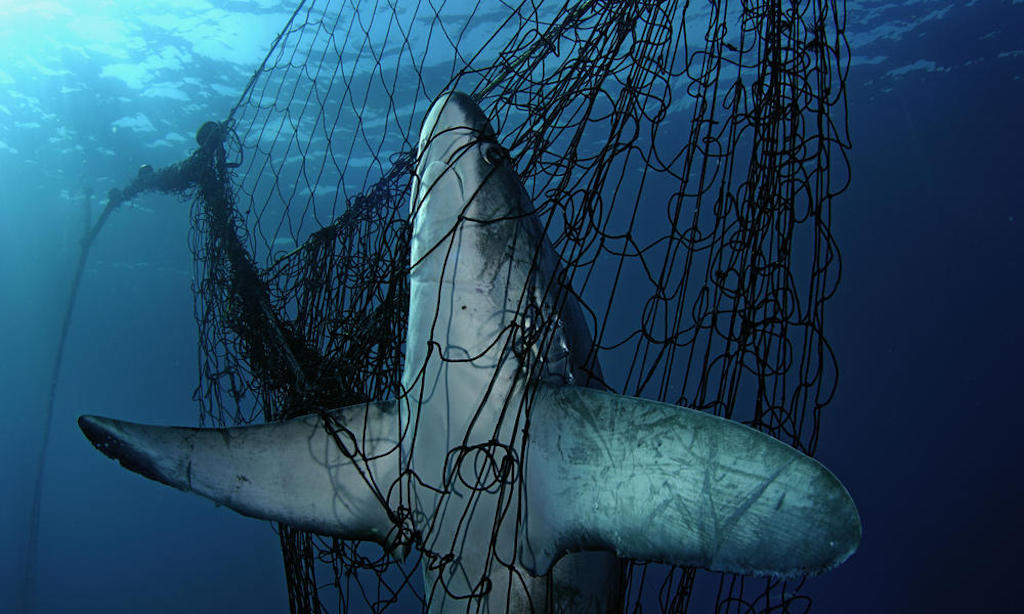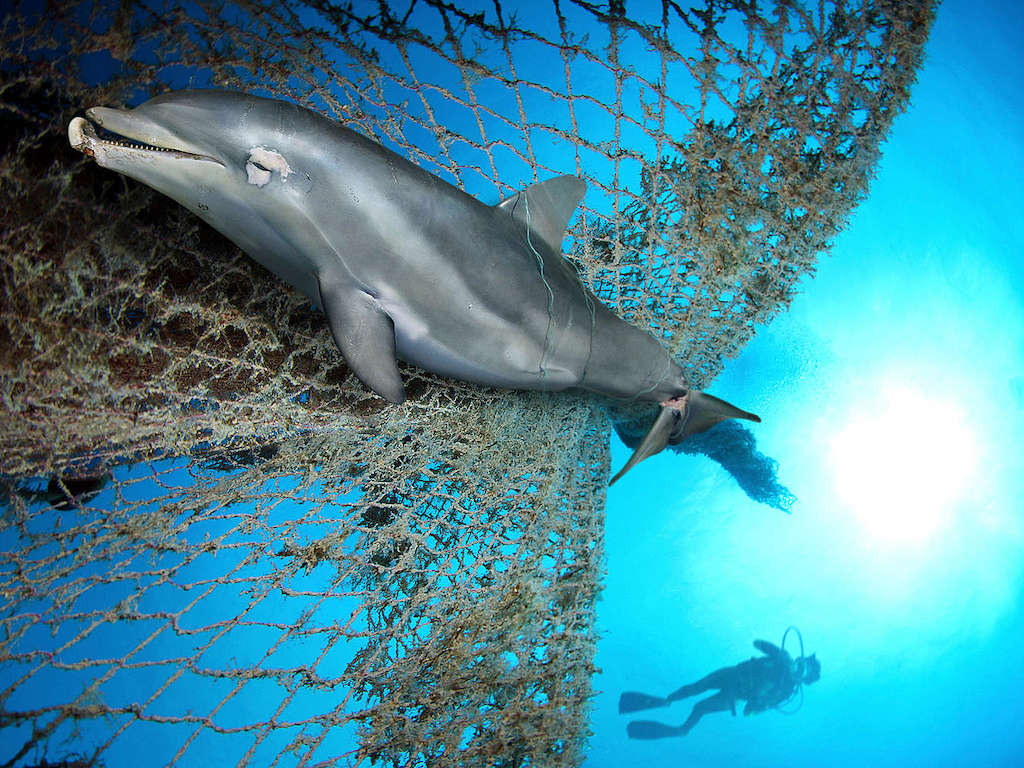4 Mins Read
A new study by an international group of scientists has found that almost 90% of the dolphin population in the Indian Ocean has been killed due to the tuna fishing industry. The “alarming” drop in dolphin numbers is related to the use of illegal gillnets that are widely used by fishing companies across the world, snaring dolphins and other cetaceans caught in the bycatch. Researchers are calling for “urgent, drastic changes” in fisheries to protect dolphin populations, and the results renews calls for a major rethink about the unsustainable nature of seafood consumption.
Led by Dr Charles Anderson of nonprofit conservation organisation Manta Marine in the Maldives and joined by Dr Putu Mustika and his team from James Cook University in Queensland, Australia, the international group of researchers found that the dolphin population in the Indian Ocean may only be at 13% of what it was in 1980. The results were calculated using the figures of bycatch from tuna gillnets and driftnets across 10 sampling programmes in Australia, Sri Lanka, India and Pakistan, which showed that the numbers of dolphins snared had decreased by 20% since 2004, a sign of rapid decline in the number of dolphins in the ocean.
“The declining cetacean bycatch rates shown by what we can measure suggest current mortality rates are not sustainable. The estimates we have developed show that average small cetacean abundance may currently be at 13% of the 1980 levels,” said Dr Putu Mustika.
One of the main culprits of the intense decline in the number of dolphins, say the researchers, is the rise in the use of gillnets. Though already banned by the United Nations, gillnets – rectangular nets up to 30 kilometres long and 20 metres deep, mimicking vertical walls in the ocean – are still used by many fishing companies in multiple countries. These massive nets have snared hundreds of thousands of dolphins over the years, and the slow decrease in the number of dolphin captures reflects that the overall population has been severely threatened.

Read: 10 reasons why you should reconsider eating seafood
According to official data from fisheries, more than 4 million small cetaceans, which includes whales, dolphins and porpoises, were caught in the Indian Ocean fishing operations between 1950 and 2018.
“Gillnets can and do kill threatened species like snubfin dolphins and dugongs. Our vulnerable species need sanctuary. We must permanently remove gillnets from their habitats,” said Tooni Mahto, a campaigner with the Australian Marine Conservation Society (AMCS), which published a separate investigation into gillnet bycatch in 2018.
The devastating loss of dolphin species is yet another consequence of the continued mass demand for seafood for human consumption, which is more broadly accelerating the decline of ocean biodiversity at alarming rates. Recent estimates from scientists say that we are quickly approaching a future of oceans with no fish left – at our current rate, by 2050, the seas will have little to no available seafood left for consumption.
Read: 2020 is the year we realise that seafood as we know it is dead
Aside from rapidly depleting hunted fish species and harming marine wildlife caught in bycatch, the seafood industry is also linked to the global plastic pollution crisis. A major contributor to our plastic ocean are lost and abandoned “ghost nets” discarded by fisheries, which amount to an astonishing 640,000 tonnes of waste in the ocean.
Although the rise in awareness of the environmental impact of seafood has ushered in “sustainably farmed” seafood in recent years, it has become increasingly clear that farmed fish is not any more “eco-friendly” because it is resource intensive, requiring 2-3 pounds of smaller fish for feed, and requiring huge amounts of antibiotics to ward off diseases and parasites in enclosed fish farms.
The latest study on the impact of the fishing industry on dolphin species renews calls for not only tighter monitoring over companies’ operations to save marine animals from extinction, but a major rethink about traditional seafood consumption altogether.
Correction March 2020: This article has been updated to reflect further understanding that the study refers specifically to the dolphin population in the Indian Ocean.
Lead image courtesy of Greenpeace.




